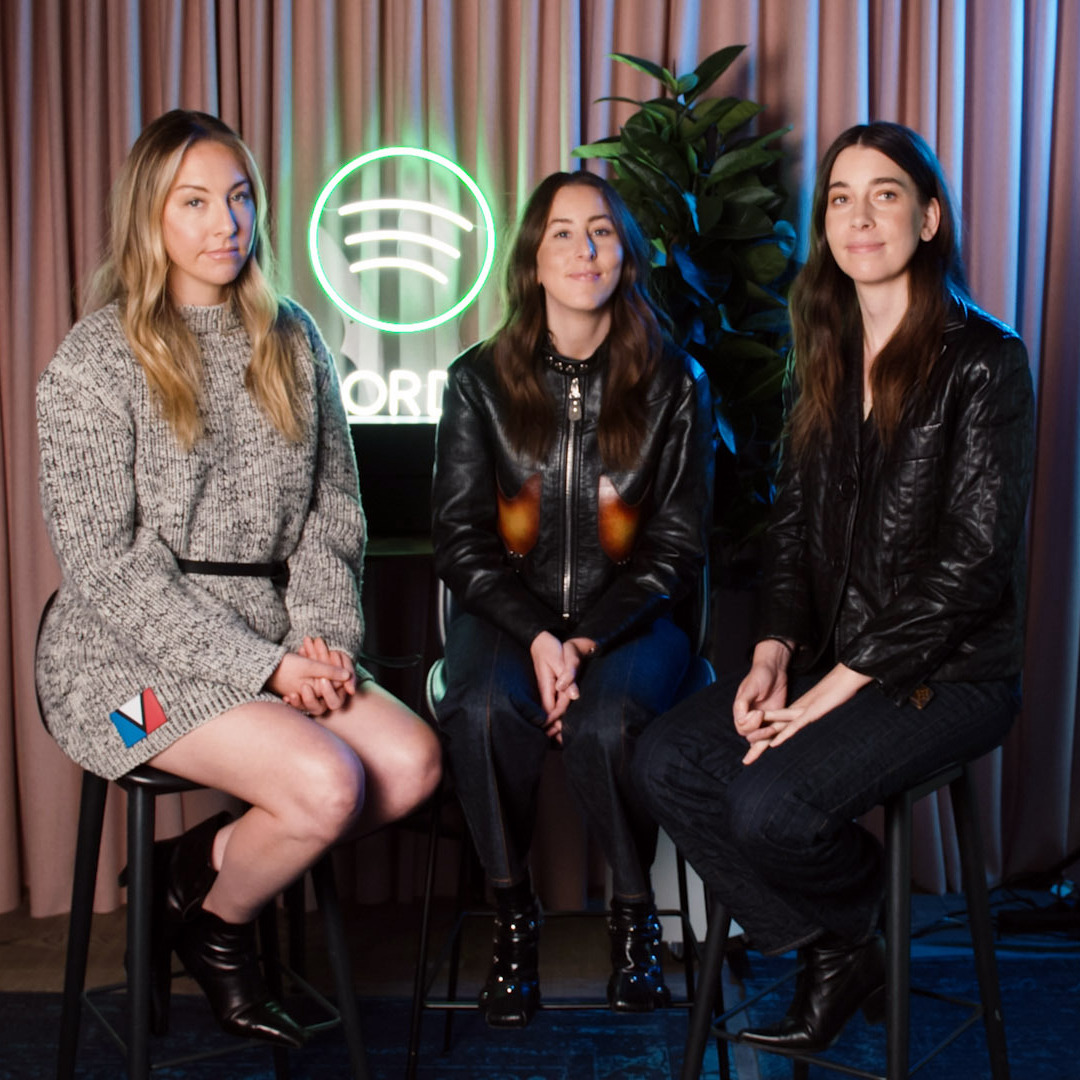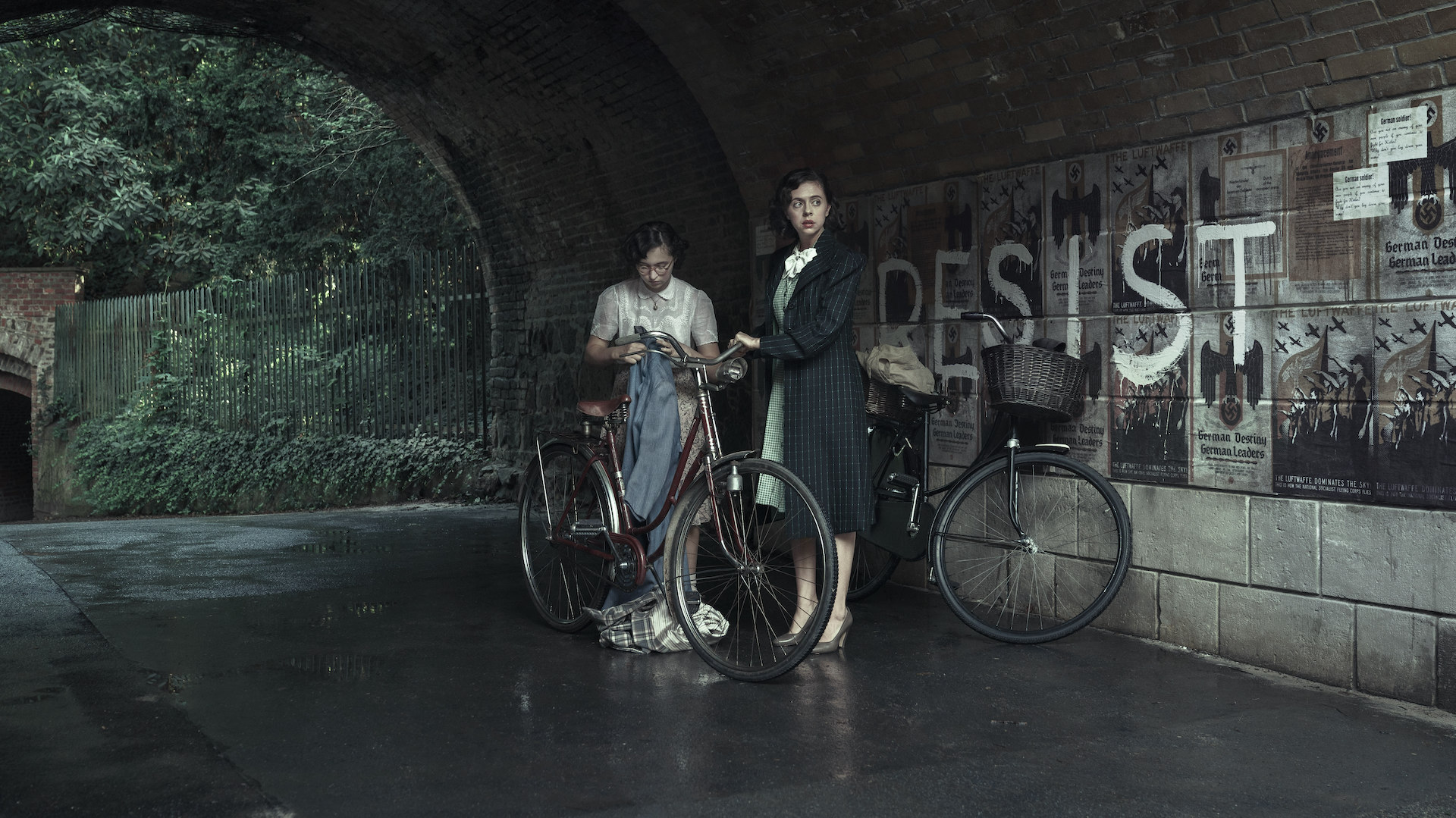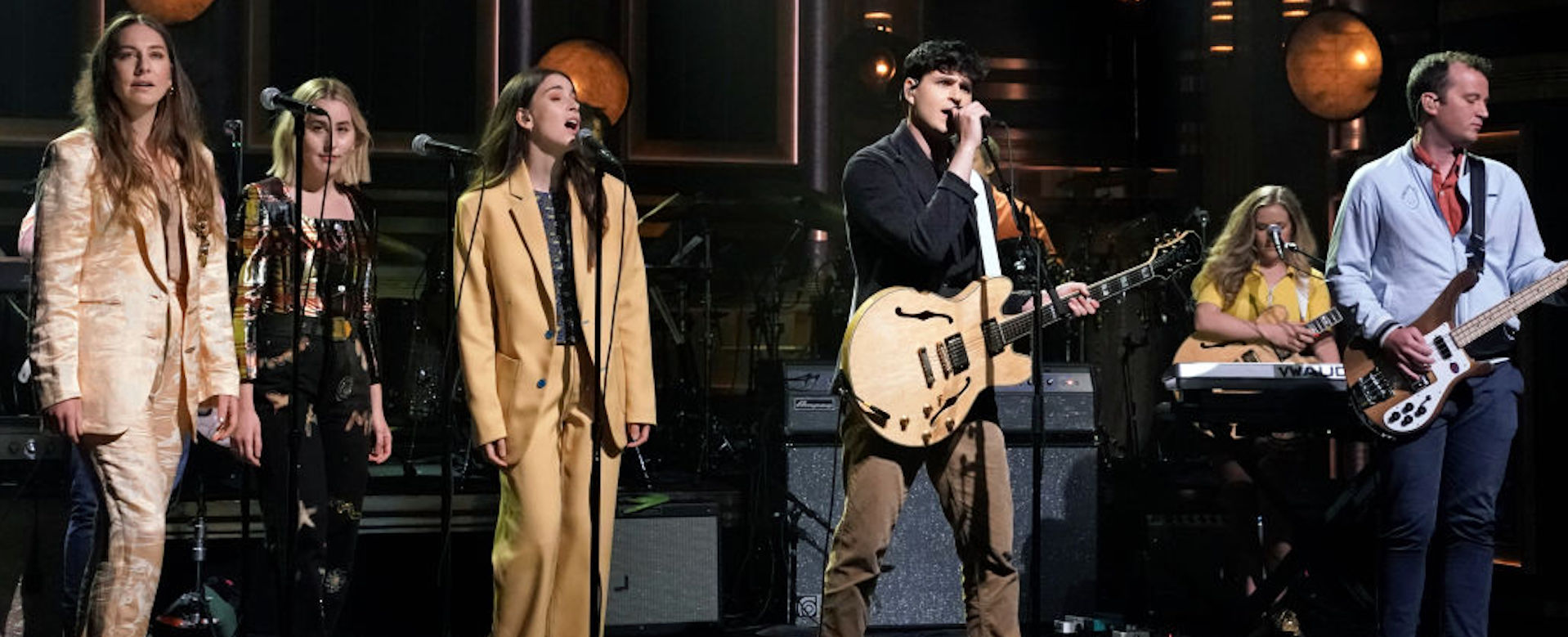
Ten years ago, L.A. trio HAIM announced its arrival to the world with the album Days Are Gone, an indie rock classic that has continued to resonate with fans around the world in the years since.
The success of the album thrust sisters Este, Danielle, and Alana Haim into the spotlight, allowing them to tour globally, collaborate with some of music’s biggest names, compose and produce TV and movie soundtracks (including A Small Light), and even star in movies.
For the Record sat down with the members of Haim and asked them to reflect on what it was like to work on their breakthrough debut, and how their lives have changed over the last decade.
What is your favorite song from Days Are Gone?
Este Haim: My favorite song on the album is “Days Are Gone.” It’s also the name of the album. And maybe not a coincidence. I’ll leave it at that.
Danielle Haim: I’m going to maybe go with our song “My Song 5.” I feel like it’s a very fun listen.
Alana Haim: I remember when you showed us the demo for that song on your laptop.
Danielle: Yeah, I wrote the demo on my laptop, and most of what was on that original demo made it to the final song. So it’s very nostalgic. I remember when I played that kick drum in the living room, on the floor, with my shitty mic.
Alana: I’m going to go with “Forever.” We were notoriously known as just a live band for a very long time. We could never get a recording right. We would basically save all of our money every year, go into the studio for like two days and record all these songs, and they always sound like shit.
It was so devastating because we knew exactly what we wanted our music to sound like in our minds. We didn’t have the vocabulary to go into a studio and say what we wanted in the studio setting.
So all these recordings were so just not what we wanted, and we refused to put out anything unless we were fully in love with it. And when we met Ludwig Göransson, who produced “Forever” and the Forever EP, it was the first time that I was so proud of a song that I would actually listen to it repeatedly and be very excited about it. We found ourselves with that song, and it kind of kicked everything off and changed our lives.
Was there a particular moment within the last decade where you really kind of stood back and realized that you’d made it?
Alana: Playing Glastonbury for the first time was a huge moment for us.
Este: We met Stevie Nicks in London and that was a pretty big moment for us.
Danielle: That was pretty crazy.
Alana: In general, we really didn’t know what was going to happen. We put this album out. The thing that’s so amazing about it is that even holding the album and listening to it after 10 years, is that we’re so proud of it still. I feel like that’s a kind of rare feeling. We’ve grown a lot as a band over the last 10 years, but listening to Days Are Gone, it still feels like the most “us” album.
I think it was just so pure and we were so young and so wide-eyed, and it was the first time we got to travel the world together. And the biggest part of our story is the album. We wouldn’t be here without it.
What are some ways you feel you’ve grown or changed as people in the past 10 years?
Alana: I think after 10 years we finally know when we step into a studio, we have the vocabulary to explain what we want in terms of the sound. And I think with each album we get more and more confident in the studio.
Danielle: Yeah, I’m learning. Every record is a learning experience when it comes to knowing how to make things sound the way you hear them in your head.
Este: With each passing year, we care more and more about the music that we make and the songs that we write and our live show. But with everything else, we give less of a fuck.
So you’ve toured with Vampire Weekend, Florence + The Machine, Rihanna, and Taylor Swift twice. What are some lessons you’ve taken from them?
Este: I think it’s just try to have as much fun as you can on tour. Everyone, especially Florence and Taylor, have so much fun on tour. They perform their asses off, but they also know how to cut a rug before and after the show.
You have to remember that you’re so lucky you get to do this and try to have as much fun as possible.
Alana: It’s the best.
Revisit all the most thrilling and nostalgic moments from HAIM’s debut album, Days Are Gone (10th Anniversary Edition)






Recent Comments